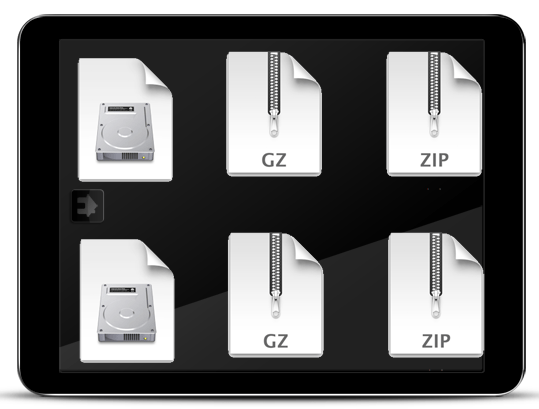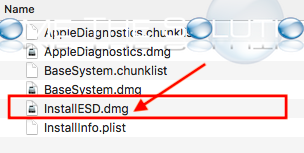This instruction is only care how to install MacOS on WSL2, but not whether you have right permission to install MacOS on your device or not. (EULA)
Finally, the program is run from the terminal (command line), so you should familiarize yourself with running python programs from the terminal here. Downloading python. This needs to be Python version 3.7 or up. From Python's official website here; If you have brew installed, you can just run the coommand brew install python3; Linux.
- prerequirements
- Setting WSL2
- Enable KVM
- set QEMU VM
- create macOS-Simple-KVM on QEMU
- Launch
- Disclaimer This instruction is only care how to install MacOS on WSL2, but not whether you have right permission to install MacOS on your device or not. (EULA) Steps prerequirements Setting WSL2 Enable KVM set QEMU VM create macOS-Simple-KVM on QEMU Launch prerequirements KVM supporting Intel CPU.
- Unzip the folder on your Windows C Drive. (C: platform-tools). Open the ADB Platform-Tools folder. Next, open a terminal window in the folder where you have ADB and fastboot installed. On Windows, you can right-click and click open command window here. (Some Windows 10 users may see “PowerShell” instead of “command prompt”.) 4.
- KVM supporting Intel CPU.
- Device to install MacOS (that does not conflict with EULA)
- First of all you need to check your Windows 10 version is greater than 2004 (means it was released at April 2020 in general).If you are not, then you update your Windows and come back here.
- Then You can enable Windows Subsystem Linux at
Control-Apps-Programs and Features-Turn Windows features on or off. - I have not enough idea that you will need Hyper-V feature for this work, but if you can, please enable Hyper-V and virtualization feature.
- Then go to Microsoft Store. Install
Ubuntu.(If you don’t want to use Ubuntu, then you can try any other linux. maybe.. :) ) - Sure you should set your Linux. Just follow instruction by starting
Ubuntuapp.At this moment you have the WSL but not WSL2. - After all, upgrade WSL to version 2. This official instruction is kind and easy enough.https://docs.microsoft.com/en-us/windows/wsl/install-win10
Congrats, you have WSL2 now! but it is just first step.
- You may think it was dizzy work to set WSL2, but it is absolutely clear than this step. So, take a deep breath before start.
- First you should get WSL2 Kernel codes. It is preferred to have code of released version. (I am using 4.19.104)https://github.com/microsoft/WSL2-Linux-Kernel
- Before clone or unzip the code, you may need to set
per-directory case sensitivity.Its quite hassle but if you skip this, you will fail to build after all! - Then extract( or clone) code somewhere you set case-sensitive.
- Following below instruction. It cames from Accelerated KVM guests on WSL 2```bash$ sudo apt update && sudo apt -y upgrade$ sudo apt -y install build-essential libncurses-dev bison flex libssl-dev libelf-dev cpu-checker qemu-kvm aria2
$ tar -xf WSL2-Linux-Kernel-4.19.104-microsoft-standard.tar.gz$ cd WSL2-Linux-Kernel-4.19.104-microsoft-standard/
$ cp Microsoft/config-wsl .config$ make menuconfig
- Let’s build! It takes an hour.
- After-build setting:
- Are you done? then make a
.wslconfigon your windows user home directory (C:Users<username>).Below is assuming your build image was copied to user home directory. - Let’s get back to PowerShell(administrator).
- You should check your Kernel(and CPU) support KVM in linux shell, after that.
- If you cannot get some positive number after last line, then you are a unfortunate guy! (I did. haha)
- If you are not, you can go to next step. Otherwise follow below steps.
- You need
WinDbg Previewin Microsoft store. - Get script from here: https://gist.github.com/steffengy/62a0b5baa124830a4b0fe4334ccc2606 (Thank you Steffengy!)get
run-wsl.batandscript.jsat same directory. - If you launch
run-wsl.bat: then you will see WinDbg window and the WSL terminal after few seconds.now you can try below again!
- You are using Windows as host, thus you may need to install X server on your Windows.
- I installed vcXsrv by following this instruction. https://blog.nadekon.net/115(Korean)
- It is preferred to add below line in your
.bashrc. - We will use KVM, thus should import KVM modules every running. Adding belows to
.bashrcare preferred. - Simply check setting is okay:
- this steps are from https://computingforgeeks.com/how-to-run-macos-on-kvm-qemu/ . some are changed but note reference.
- Let’s install requirements and code.
- Get install disk from server.
- make disk image.
- add below disk options to
./basic.sh. - You will need to format disk, install macOS from internet, and setting your preferences with ‘Clover’.Details are described at the origin instruction.
- when you run
.basic.sh, you will see a window is opening via vcXsrv! - you may take 2 or more hours to install Catallina on your VM, after that, you are free to use MacOS VM.
- Memory and Display settings might be uncomfortable, but you can find options easily from internet: keyword is
QEMU mem/vga setting.
Here we are again with a nice How-to Guide for the Android Lovers. This post is about the ADB and fastboot drivers and how to Install ADB on Windows, MAC, and Linux. ADB, Android Debug Bridge, is a command-line utility which helps you to run the ADB and fastboot commands on your android devices. In a simple way, we can say that ADB and FASBTOOT are the tools which allow you send terminal commands to your phone from your computer via USB. They both serve different functions, but they are must for the Android Phone users.
Suppose you want to customize your Android Devices like Install TWRP on the phone, Root the Android Phone to make changes in the system or Install Custom ROM on your Stock Android phone. Then you need to run some ADB and Fastboot commands. At that time you need these ADB and fastboot drivers on your Windows, MAC, and Linux.
There are so may tutorial are available on the internet to install the ADB setup files, but sometime they will not work or outdated. So here we are providing you the latest ADB drivers and that is direct from the Google Servers. Which means these ADB drivers are updated and work on any System and Android Devices. All you have to follow the below mention tutorial to setups the ADB and fastboot drivers on Windows, MAC, and Linux. So let’s get started and install ADB on your desktop.
Table of Contents
- 1 Guide To Install ADB and Fastboot
Guide To Install ADB and Fastboot
NOTE:- Install ADB on Your Desktop is a half process to complete the whole ADB setup you need to make some changes on your smartphone or tablet to accept the ADB commands.
Allows USB debugging On Android Devices
1. Open the Setting page on your device.
2. From here Tap on the About Phone option generally near the bottom of the list (this is hidden behind the “System” option in Google’s latest Android Oreo version).
3. In the about phone section of your phone, Tap the Build Number option 7 times to enable Developer Mode. And you will see a popup message on your screen “You are now a developer”.
4. Now go back to the Settings page and you should see a new Developer Options menu here.
5. Go in there and scroll down to USB debugging and turn the toggle on. This will enable the USB debugging On Android.
Now all you have to setup the ADB files on your desktop. Follow the rest of the instructions for your particular operating system.

Install ADB on Windows Desktop
1. Visit this Google page to Download the ADB ZIP file for Windows.
2. Unzip the folder on your Windows C Drive. (C:platform-tools).
3. Open the ADB Platform-Tools folder. Next, open a terminal window in the folder where you have ADB and fastboot installed. On Windows, you can right-click and click open command window here. (Some Windows 10 users may see “PowerShell” instead of “command prompt”.)
4. Now connect your phone to the Windows PC with the USB cable.
5. Now enter the following command in the command prompt window to check the connection between PC and Phone.
Your device’s serial number should appear in the command window.
6. Also on your phone’s screen, you should see a pop screen to allow or deny USB Debugging access. Grant USB Debugging access when prompted (and tap the always allow check box if you never want to see that prompt again).
That’s it! Now you can now run any ADB command on your device form your Windows PC.
How to Install ADB on MAC
1. Visit this Google page to Download the ADB ZIP file for MacOS.
2. Now extract the folder on your desktop.
3. Open Terminal on Your MAC.
4. Now to browse to the folder you extracted ADB into, enter the following command on Terminal window.
On my MAC the command looks like this cd /Users/Sid/Desktop/platform-tools/
5. Now connect your phone to the MAC with the USB cable.
6. Now enter the following command in the Terminal window to check the connection between MAC and Phone.
7. Now on your device, you’ll see an “Allow USB debugging” prompt. Allow the connection.
Voila! You successfully install the ADB on MAC OS.


How to Install ADB on Linux
1. Visit this Google page to Download the ADB ZIP file for MacOS.
2. Now extract the folder on your Linux desktop.
3. Open the Terminal app on your Linux machine to follow the next step to install ADB.
4. Now to browse to the folder you extracted ADB into, enter the following command on Terminal window.
On my MAC the command looks like this cd /Users/Sid/Desktop/platform-tools/
5. Now connect your Android Device to the Linux with the USB cable.
Macos Unzip Terminal Download
6. Now enter the following command in the Terminal window to check the connection between Linux and Android SmartPhone.
7. Now on your device, you’ll see an “Allow USB debugging” prompt. Allow the connection.
Macos Terminal Extract Xip
Voila! You successfully install the ADB on your Linux Desktop.
Macos Terminal Unzip Password
So with this way you easily install and setup ADB on your Windows, MAC, and Linux. You can also check some of the Other guides here to install ADB and fastboot, Fastest Method to Setup ADB and Fastboot on Windows and Install ADB and Fastboot on Mac, Linux, Chrome OS With Nexus Tool Script
